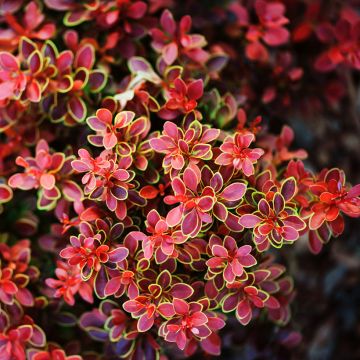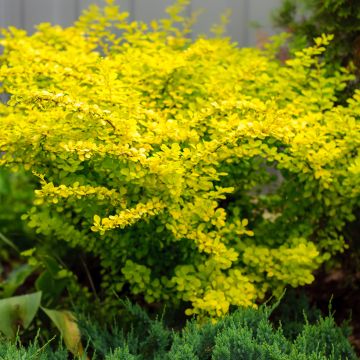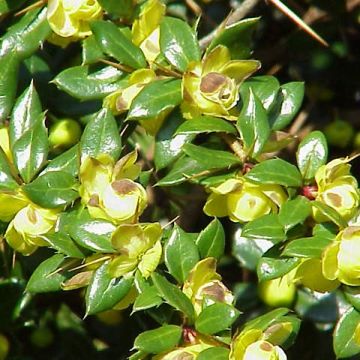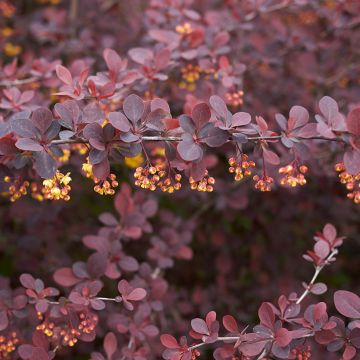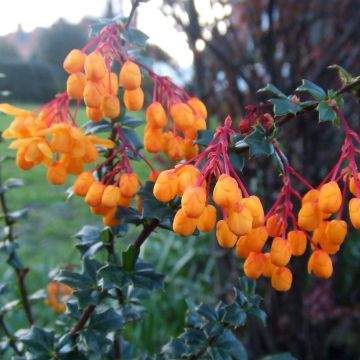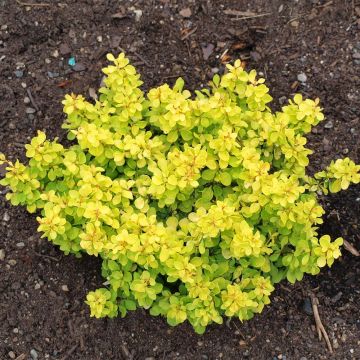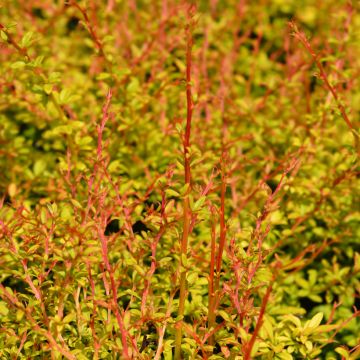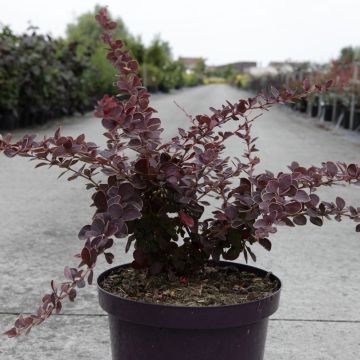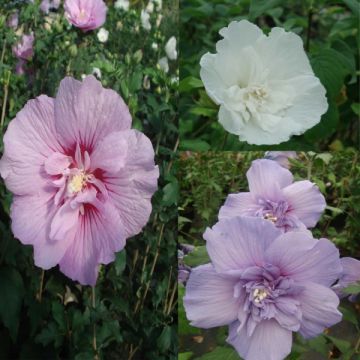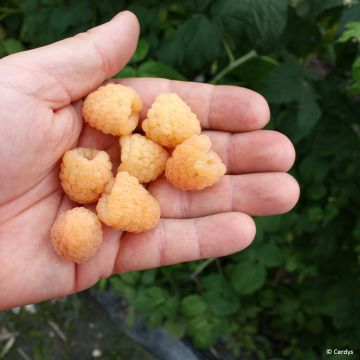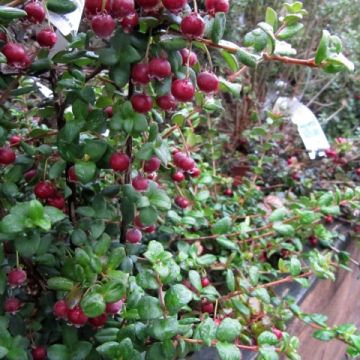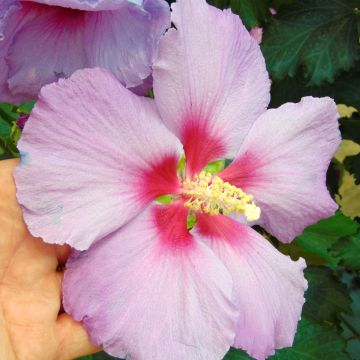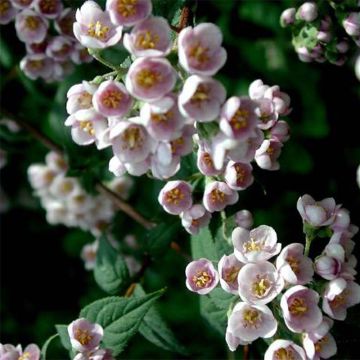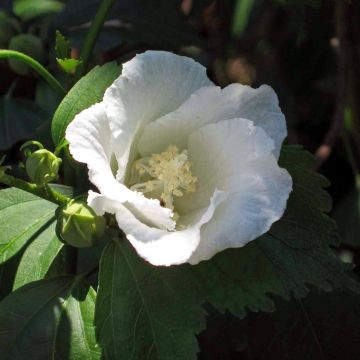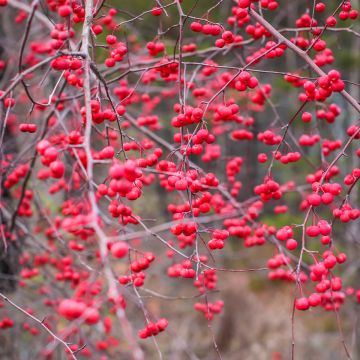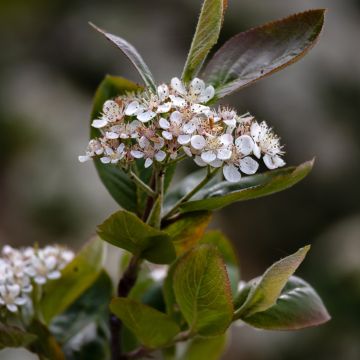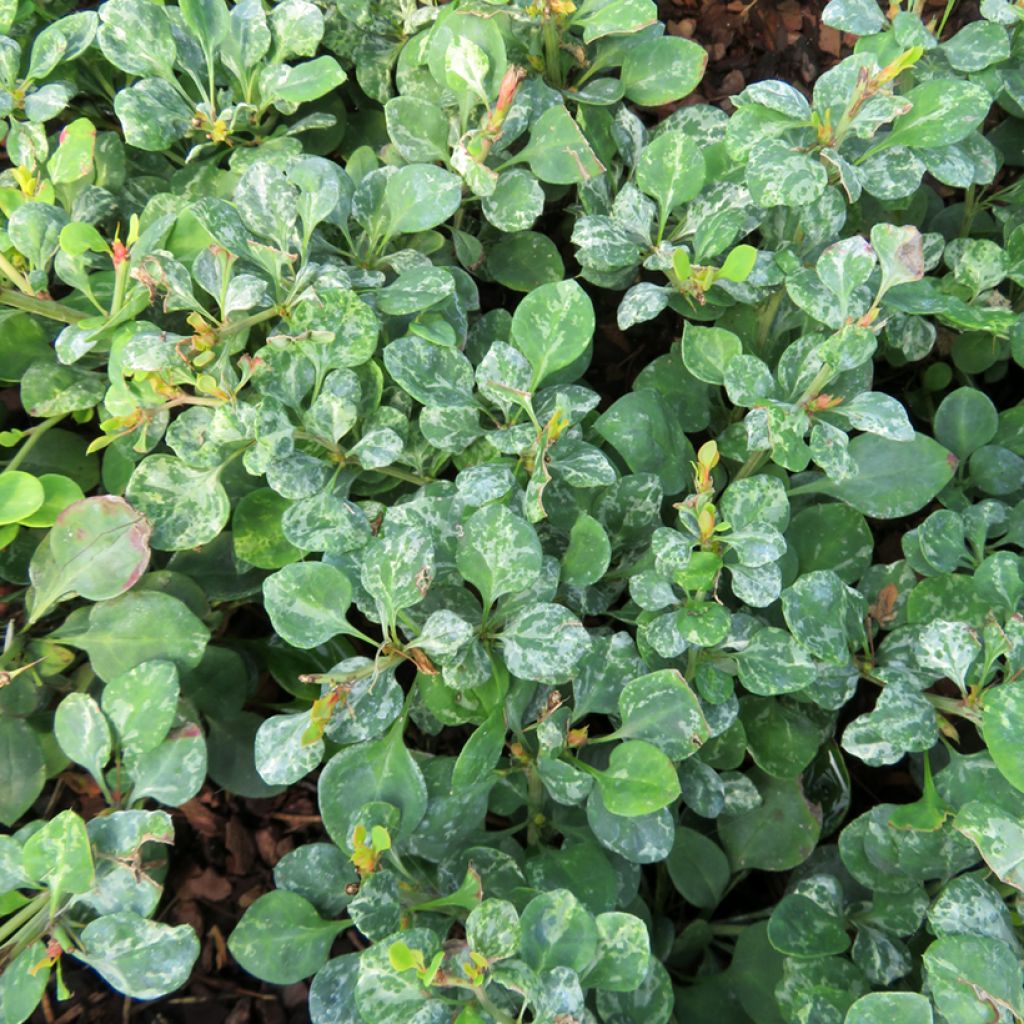

Berberis thunbergii Silver Beauty


Berberis thunbergii Silver Beauty


Berberis thunbergii Silver Beauty
Berberis thunbergii Silver Beauty
Berberis thunbergii Silver Beauty
Japanese Barberry, Thunberg's Barberry
Special offer!
Receive a €20 voucher for any order over €90 (excluding delivery costs, credit notes, and plastic-free options)!
1- Add your favorite plants to your cart.
2- Once you have reached €90, confirm your order (you can even choose the delivery date!).
3- As soon as your order is shipped, you will receive an email containing your voucher code, valid for 3 months (90 days).
Your voucher is unique and can only be used once, for any order with a minimum value of €20, excluding delivery costs.
Can be combined with other current offers, non-divisible and non-refundable.
Home or relay delivery (depending on size and destination)
Schedule delivery date,
and select date in basket
This plant carries a 24 months recovery warranty
More information
We guarantee the quality of our plants for a full growing cycle, and will replace at our expense any plant that fails to recover under normal climatic and planting conditions.
Would this plant suit my garden?
Set up your Plantfit profile →
Description
The Berberis thunbergii 'Silver Beauty' is a variety of barberry remarkable for its compact and upright habit, well suited for hedge formation, and superb colourful foliage. Speckled green with cream white, sometimes with a touch of pink, the vegetation offers an autumn fireworks display when it turns bright red mixed with yellow. Its discreet yellow spring flowering has the advantage of producing small decorative bright red fruits at the end of the season. This deciduous and thorny shrub is easy to grow in the sun, tolerates partial shade, and adapts to most slightly moist soils.
Berberis belongs to the Berberidaceae family, which includes 14 genera, including sacred bamboo or Nandina, Epimedium, and the rare Podophyllum, both with decorative and surprising leaves. The Berberis genus is diverse and includes 400 to 500 deciduous or evergreen shrubs with green or colourful foliage. Their spines are either undeveloped or formidable, sometimes even ornamental. Its yellow wood recognises Berberis's name from the Arabic word berberys, which refers to its fruit. The Berberis thunbergii, also known as Thunberg's barberry or Japanese barberry, is a shrub native to Japan, which was introduced to Europe as early as 1864. The botanical species has a compact and regular habit, reaching a height of 1.50 m. It is highly appreciated for its numerous varieties with colourful foliage.
'Silver Beauty' is a deciduous cultivar that is more compact than the species and does not exceed 1.10 to 1.20 m in height at maturity. It has a distinctly upright and narrow vegetation, reaching only 60 cm in width at maturity. Its growth is slow to moderate, and its dense foliage makes it a good plant for low hedges. The leaves are grouped in 2 or 3, and each layer has a relatively short and thin spine, although quite prickly. Relatively small, the leaves measure approximately 3 cm long and have a spatulate to obovate shape. Tender green when emerging, they darken slightly afterwards and are widely speckled with cream white. This attire contrasts very nicely with the slender branches, which are somewhat pinkish to red. Mainly two-tone, the leaves can also have shades of pink. When autumn arrives, the vegetation gradually turns bright red, passing through various shades of yellow and apricot, which is striking. This final blaze lasts about three weeks before the leaves fall to the ground, announcing the arrival of winter.
Due to its small size, this small shrub produces relatively discreet yellow flowers around May. Numerous clusters of one to six small bell-shaped flowers bloom on one-year-old stems. Very nectariferous, they develop into bright red fruits, measuring from 6 to 8 mm in length, in autumn, which persist on the branches for quite a long time in winter.
The 'Silver Beauty' Berberis will appeal to enthusiasts of variegated foliage, and its compact growth will also allow it to be grown in a container on a terrace. The garden will integrate well in a diverse low hedge and in a flower bed. You can create contrasts of colour, both in terms of leaves and flowers, as well as shapes, by choosing different shrub silhouettes or more ample foliage. The Mahonia 'Volcano' with its magnificent dark green evergreen foliage, cut like a fern, would be a perfect companion. In addition, its late flowering in orange-yellow spikes will energise your flower bed from August to October. In not-too-harsh climates, you can also create a magnificent scene by planting the Ceanothus 'Tuxedo', a California Lilac with dark purple evergreen foliage and beautiful sky blue inflorescences in late spring, in the background. In moist soil, plant a Viburnum davidii, a superb low shrub with glossy dark green evergreen foliage, which will reward you with a pleasant white flowering in June and pretty decorative blue fruits.
Report an error about the product description
Berberis thunbergii Silver Beauty in pictures
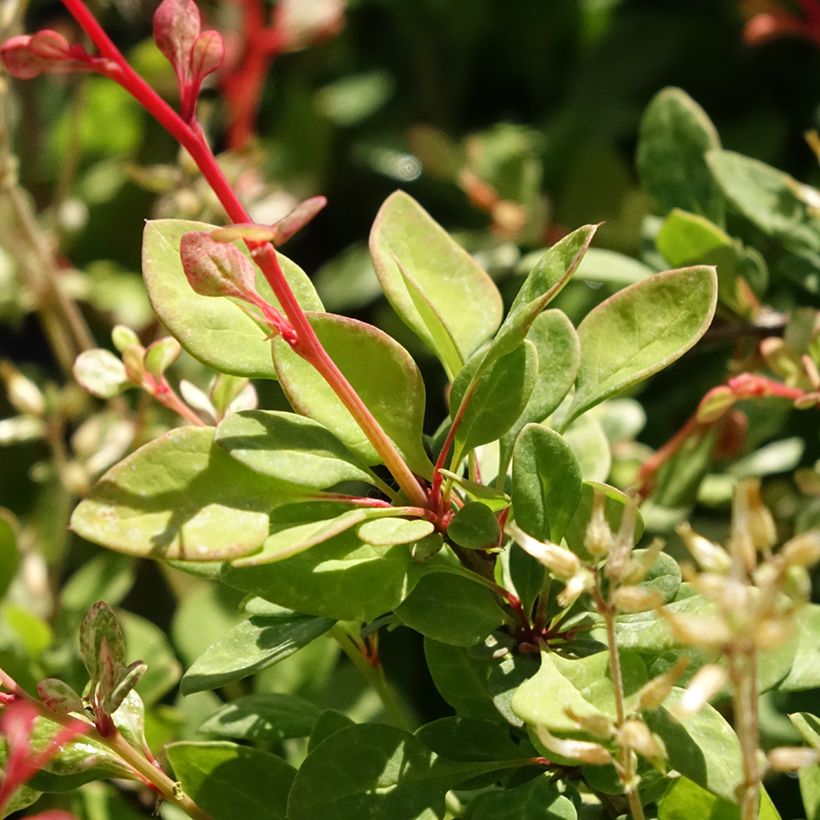

Plant habit
Flowering
Foliage
Botanical data
Berberis
thunbergii
Silver Beauty
Berberidaceae
Japanese Barberry, Thunberg's Barberry
Berberis thunbergii var. argenteomarginata
Cultivar or hybrid
Other Berberis - Barberries
View all →Planting and care
The Berberis thunbergii 'Silver Beauty' is exceptionally hardy, beyond -25°C. It can be planted in a sunny position in spring or autumn, in any fresh, well-drained soil, even limestone, poor or stony. Reserve partial shade for the warmer climates. Water generously and frequently during the first summers. No need to fertilise, it requires little maintenance, just make sure to keep the soil moist, especially in summer. For Berberis planted in hedges, balance the shape in spring and September. Trim the branches after flowering in free hedges to give the bush a rounded, balanced shape. Be careful not to touch the branches with bare hands, as they have thorns that are difficult to remove once they penetrate the skin.
Planting period
Intended location
Care
This item has not been reviewed yet - be the first to leave a review about it.
Similar products
Haven't found what you were looking for?
Hardiness is the lowest winter temperature a plant can endure without suffering serious damage or even dying. However, hardiness is affected by location (a sheltered area, such as a patio), protection (winter cover) and soil type (hardiness is improved by well-drained soil).

Photo Sharing Terms & Conditions
In order to encourage gardeners to interact and share their experiences, Promesse de fleurs offers various media enabling content to be uploaded onto its Site - in particular via the ‘Photo sharing’ module.
The User agrees to refrain from:
- Posting any content that is illegal, prejudicial, insulting, racist, inciteful to hatred, revisionist, contrary to public decency, that infringes on privacy or on the privacy rights of third parties, in particular the publicity rights of persons and goods, intellectual property rights, or the right to privacy.
- Submitting content on behalf of a third party;
- Impersonate the identity of a third party and/or publish any personal information about a third party;
In general, the User undertakes to refrain from any unethical behaviour.
All Content (in particular text, comments, files, images, photos, videos, creative works, etc.), which may be subject to property or intellectual property rights, image or other private rights, shall remain the property of the User, subject to the limited rights granted by the terms of the licence granted by Promesse de fleurs as stated below. Users are at liberty to publish or not to publish such Content on the Site, notably via the ‘Photo Sharing’ facility, and accept that this Content shall be made public and freely accessible, notably on the Internet.
Users further acknowledge, undertake to have ,and guarantee that they hold all necessary rights and permissions to publish such material on the Site, in particular with regard to the legislation in force pertaining to any privacy, property, intellectual property, image, or contractual rights, or rights of any other nature. By publishing such Content on the Site, Users acknowledge accepting full liability as publishers of the Content within the meaning of the law, and grant Promesse de fleurs, free of charge, an inclusive, worldwide licence for the said Content for the entire duration of its publication, including all reproduction, representation, up/downloading, displaying, performing, transmission, and storage rights.
Users also grant permission for their name to be linked to the Content and accept that this link may not always be made available.
By engaging in posting material, Users consent to their Content becoming automatically accessible on the Internet, in particular on other sites and/or blogs and/or web pages of the Promesse de fleurs site, including in particular social pages and the Promesse de fleurs catalogue.
Users may secure the removal of entrusted content free of charge by issuing a simple request via our contact form.
The flowering period indicated on our website applies to countries and regions located in USDA zone 8 (France, the United Kingdom, Ireland, the Netherlands, etc.)
It will vary according to where you live:
- In zones 9 to 10 (Italy, Spain, Greece, etc.), flowering will occur about 2 to 4 weeks earlier.
- In zones 6 to 7 (Germany, Poland, Slovenia, and lower mountainous regions), flowering will be delayed by 2 to 3 weeks.
- In zone 5 (Central Europe, Scandinavia), blooming will be delayed by 3 to 5 weeks.
In temperate climates, pruning of spring-flowering shrubs (forsythia, spireas, etc.) should be done just after flowering.
Pruning of summer-flowering shrubs (Indian Lilac, Perovskia, etc.) can be done in winter or spring.
In cold regions as well as with frost-sensitive plants, avoid pruning too early when severe frosts may still occur.
The planting period indicated on our website applies to countries and regions located in USDA zone 8 (France, United Kingdom, Ireland, Netherlands).
It will vary according to where you live:
- In Mediterranean zones (Marseille, Madrid, Milan, etc.), autumn and winter are the best planting periods.
- In continental zones (Strasbourg, Munich, Vienna, etc.), delay planting by 2 to 3 weeks in spring and bring it forward by 2 to 4 weeks in autumn.
- In mountainous regions (the Alps, Pyrenees, Carpathians, etc.), it is best to plant in late spring (May-June) or late summer (August-September).
The harvesting period indicated on our website applies to countries and regions in USDA zone 8 (France, England, Ireland, the Netherlands).
In colder areas (Scandinavia, Poland, Austria...) fruit and vegetable harvests are likely to be delayed by 3-4 weeks.
In warmer areas (Italy, Spain, Greece, etc.), harvesting will probably take place earlier, depending on weather conditions.
The sowing periods indicated on our website apply to countries and regions within USDA Zone 8 (France, UK, Ireland, Netherlands).
In colder areas (Scandinavia, Poland, Austria...), delay any outdoor sowing by 3-4 weeks, or sow under glass.
In warmer climes (Italy, Spain, Greece, etc.), bring outdoor sowing forward by a few weeks.































